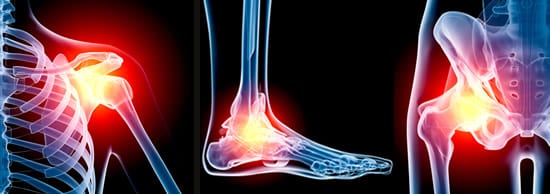
HIP ARTHRITIS
Arthritis is a condition that causes pain, stiffness and swelling in the joints, which can include the hips. Hip arthritis is most often found in older individuals, although it sometimes develops in younger adults and even children. Arthritis may occur due to a gradual wearing down of the cartilage that protects the bones of the joint, or from overuse or injury to the hip joint.
Over time, hip joints affected by arthritis may become severely damaged. Hip arthritis is typically characterized by pain, tenderness and swelling, and may result in loss of movement in the hip joints.
Types of Hip Arthritis
In most cases, arthritis of the hip is a result of osteoarthritis, a degenerative condition that causes cartilage to become progressively weaker due to the aging process. Hip arthritis may also be inflammatory, which occurs when the immune system becomes overactive and begins to attack healthy tissue. Inflammatory hip arthritis can occur in patients of any age.
Types of inflammatory hip arthritis include:
Rheumatoid Arthritis
Rheumatoid arthritisan is an autoimmune disorder that causes pain and swelling in the lining of the hip joint.
Ankylosing Spondylitis
Ankylosing spondylitis is a form of inflammatory arthritis that leads to swelling between the vertebrae. This often affects the sacroiliac joints and eventually spreads to the hips.
Systemic Lupus Erythematosus
Systemic lupus erythematosus is a condition that causes inflammation and weakened bone structure in the hips. It is most often found in young adult women.
Causes of Hip Arthritis
There are a variety of factors that may contribute to the development of hip arthritis. The condition generally occurs in older adults, though it can develop in younger patients including children, especially if the hip joint is injured or overused. Hip arthritis is also linked to genetics, and is more prevalent in those with certain health conditions, such as obesity.
Symptoms of Hip Arthritis
Patients with hip arthritis usually experience difficulty walking, since the pain can manifest itself in not only the hip, but also the groin, thigh, buttocks or knee. Additionally, patients may have quite a bit of discomfort after they having been seated for a long period of time. The pain is often described as sharp and intense. Symptoms of hip arthritis may include:
- Stiffness in the hip
- Pain, swelling or tenderness at the hip joint
- A crunching type of sound in the hip upon certain movements
- Inability to move the hip to perform routine activities, such as putting on socks
Diagnosis of Hip Arthritis
Hip arthritis is diagnosed after an evaluation of the patient's medical history and symptoms and a physical examination. The physical examination will focus on assessing the overall range of motion within the hip. Additional diagnostic tests may include:
- Joint fluid testing
- Blood tests
- X-rays
- Urinalysis
- MRI scans
Treatment for Hip Arthritis
There are a number of effective treatment options designed to help prevent further deterioration of the hip joint. Conservative measures may include non-steroidal anti-inflammatory drugs, physical therapy and assistive devices, such as using a cane for added support while walking. Heat and cold therapy may also relieve pain and swelling in the hips. For more severe cases of hip arthritis in which the symptoms are not alleviated by these treatments, surgery may be required to repair tendons or replace damaged joints.
There are several surgical options for treating hip arthritis, including hip arthroscopy, a minimally invasive procedure performed using a flexible tube with an attached camera known as an arthroscope. The arthroscope helps the surgeon thoroughly view the affected joint in order to remove any loose bodies and damaged cartilage, or realign the joint to minimize pain and inflammation. In other cases, the best treatment option may be total hip replacement surgery. This procedure, commonly recommended for patients with rheumatoid arthritis, involves the removal of cartilage and bone. They are replaced with metal or plastic joint replacements to restore the function of the hip.
Prevention of Hip Arthritis
Early diagnosis of hip arthritis may prevent the condition from progressing, and help patients maintain mobility and function. In addition to medical treatment, some forms of arthritis may respond to lifestyle changes such as losing weight, eating a healthy diet and exercise.
JOINT PAIN
Most joints in the body, including the hips, knees, and shoulders, are in constant use. They may eventually wear out over time due to overuse or aging, resulting in severe pain and inflammation. Joint pain is diagnosed by carefully evaluating the patient's symptoms and pinpointing any underlying causes. Treatment is aimed at identifying the specific area of pain and preserving function of the impacted joint. Nonsurgical treatment methods for moderate to severe joint pain may include physical therapy, nonsteroidal anti-inflammatory drugs and over-the-counter medications that can provide pain relief and reduce inflammation. Depending on the extent of the damage and pain, there are several surgical options for either repairing or replacing damaged joints if conservative techniques are not effective.
